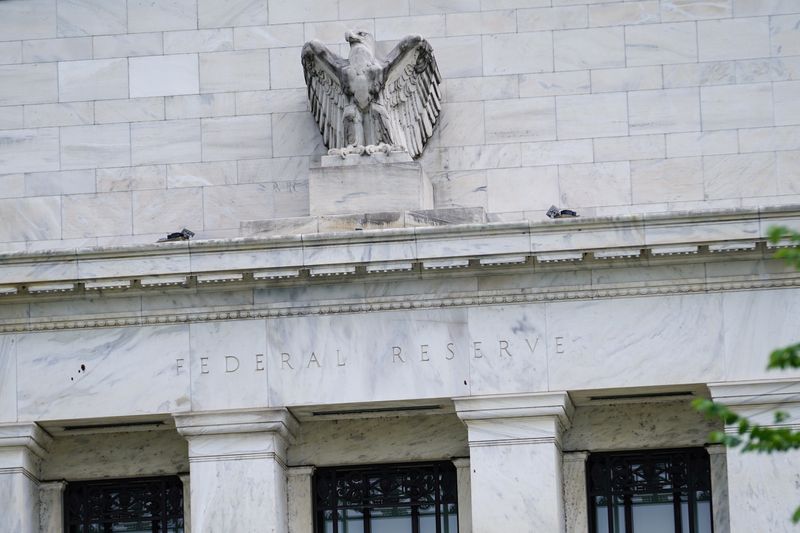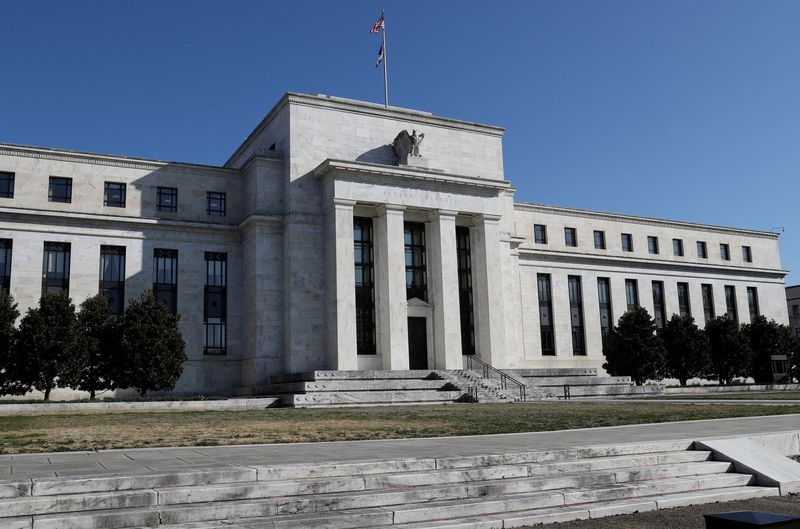By Ann Saphir and Howard Schneider
WASHINGTON (Reuters) - The Federal Reserve's aggressive drive to bring inflation down to its 2% target will take years to complete and come at a cost of notably higher unemployment and slower economic growth, according to projections from policymakers published on Wednesday that cast doubt on prospects for a so-called "soft landing."
The Fed's latest quarterly summary of policymaker projections shows U.S. central bankers expect to raise the policy rate, now in the 3%-3.25% range after Wednesday's 75-basis-point increase, to 4.4% by the end of this year and to 4.6% by the end of next year, according to the median estimate of all 19 Fed policymakers.
The rate hikes are the sharpest since the last time the Fed, under Paul Volcker's leadership, battled super-high inflation in the 1980s. But back then, Volcker had to drive borrowing costs well into the double digits to vanquish inflation; even the most hawkish Fed policymaker today sees rates rising only to 4.9% next year, Wednesday's projections show.
Fed Chair Jerome Powell is hopeful that the projected rate path will do the job, allowing him to avoid the high costs imposed by Volcker's actions, including 10.8% unemployment.
But the projections do show Americans are in for some pain ahead as the Fed works to end inflation and prevent what Powell says would otherwise be even worse outcomes.
UNEMPLOYMENT FORECAST IN FOCUS
Inflation by the Fed's preferred measure - the personal consumption expenditures price index - is expected to be 5.4% in the last quarter of this year before cooling to 2.8% in the final quarter of next year, the projections show. By the end of 2024 policymakers see inflation at 2.3%, and easing to its 2% target by the end of 2025.
Meanwhile policymakers expect their interest-rate hikes to push the unemployment rate, now at 3.7%, to 3.8% next quarter and 4.4% in the final quarter of 2023.
That projected increase of 0.6 percentage point indicates a recession will begin by year's end as defined by an indicator that has gained a following in recent years. The Sahm Rule, named for former Fed staffer Claudia Sahm, says the U.S. economy is typically in recession once the 3-month moving average of the unemployment rate rises half a percentage point above the rate's lowest three-month average over the preceding 12 months. That low currently is around 3.56%.
Historically once the unemployment rate rises by half a percentage point, it continues to rise another point or two, if not more.

In the last forecast, issued in June, the jobless rate was seen rising to 4.1% in 2024.
Wednesday's projections show Fed policymakers have also become more pessimistic about the outlook for economic growth. One policymaker saw the U.S. economy shrinking next year, the projections showed, though most did pencil in an expansion this year and next. The median projection was for GDP growth to slow to 0.2% this year, compared with June's expectation for 1.7% growth.
